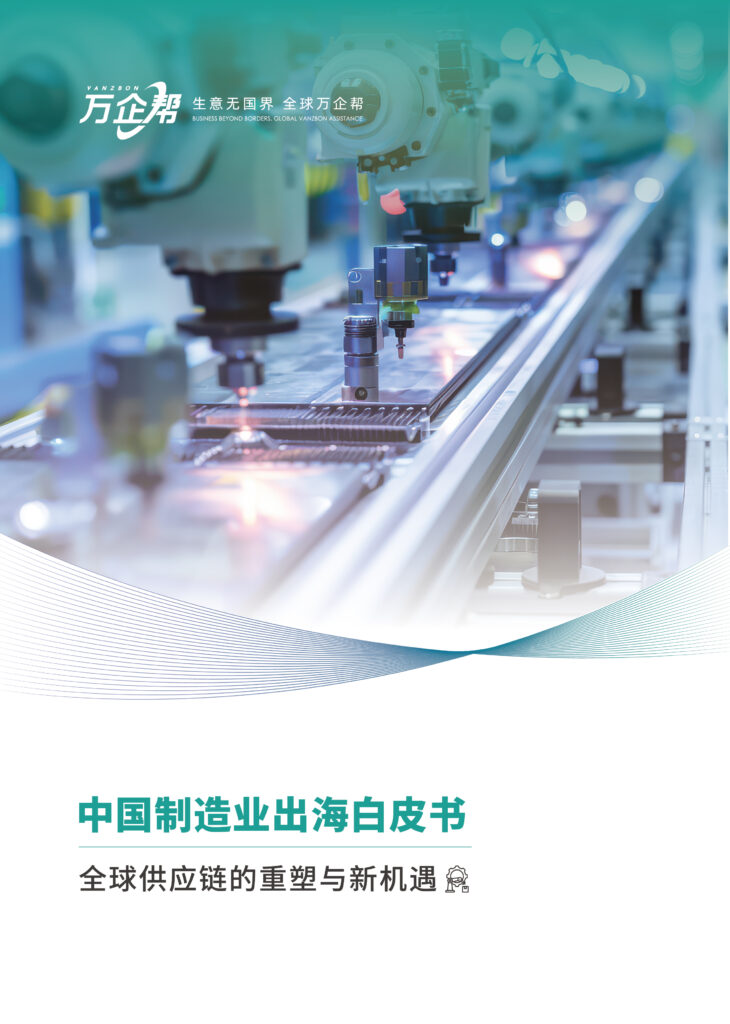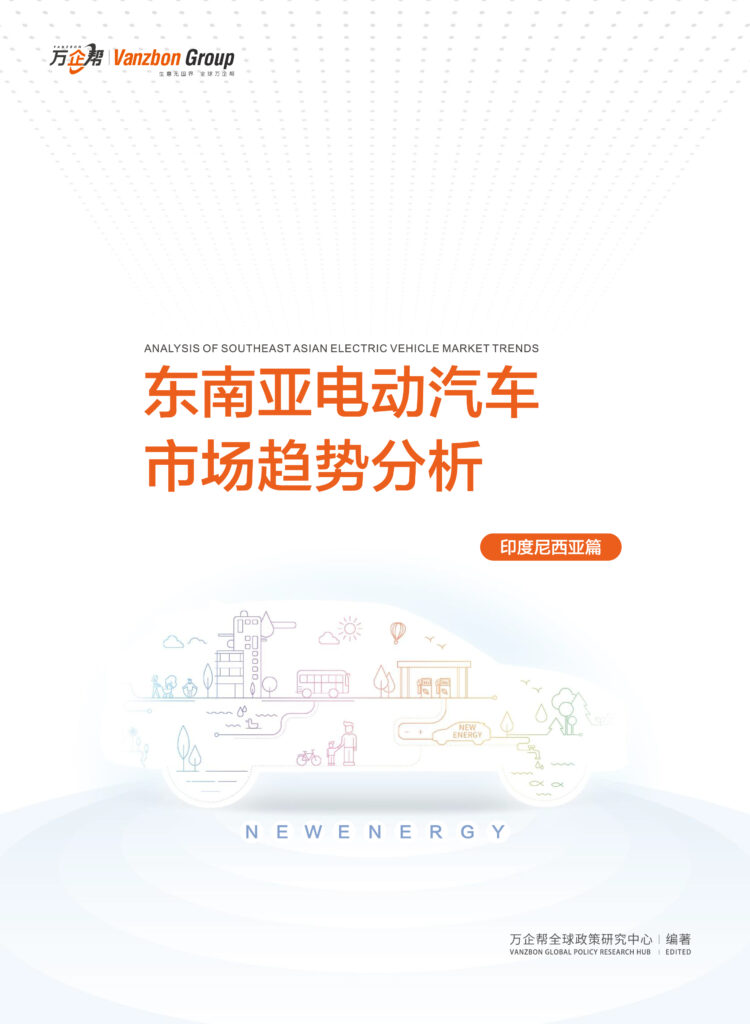Japan’s labor dispute resolution mechanism is a multi-level, comprehensive system that integrates legal, administrative and internal enterprise approaches. This article delves into various aspects of this unique system, starting from the Japanese labor law framework and elaborating on various dispute resolution avenues ranging from court litigation to administrative mediation to the innovative labor trial system. The article particularly emphasizes Japan’s cultural background focusing on mediation and negotiation, as well as its emphasis on preventive measures and long-term solutions. Through specific case analysis, this article demonstrates how these mechanisms operate in practice and provides targeted suggestions to help overseas companies better understand and adapt to Japan’s labor environment. The article points out that successfully dealing with Japanese labor disputes requires not only understanding relevant laws and procedures, but also requiring enterprises to establish a sound internal management system, cultivate cross-cultural communication skills, and actively utilize local resources. By comprehensively understanding and effectively using Japan’s labor dispute resolution mechanism, overseas companies can better prevent potential problems, establish harmonious labor relations, and lay a solid foundation for long-term success in the Japanese market.
Overview of Japanese industrial relations
Japan’s industrial relations have unique historical origins and cultural heritage, and its development trajectory profoundly reflects the social and economic changes of this island country. Dating back to the Meiji Restoration, Japan began to introduce Western industrialization models on a large scale, but it retained traditional familial and collectivist values in the process. This fusion of Eastern and Western thought laid the foundation for future labor-capital relations with Japanese characteristics.
The economic reconstruction period after World War II was a critical period for the formation of labor relations in Japan. Under the influence of the American occupation authorities, Japan introduced Western-style trade union systems and collective bargaining mechanisms. However, these systems were quickly localized and incorporated into Japan’s unique management philosophy. Companies began to regard employees as members of the “company family” and emphasized long-term employment relationships and common interests. This concept gradually evolved into the famous “Japanese-style management” model.
Industrial relations in modern Japan show several distinct characteristics. First, both labor and management tend to emphasize collaboration rather than confrontation. Japanese companies have permanent labor consultation meetings to regularly discuss operating conditions and employee concerns. This open communication mechanism greatly reduces potential disputes. Secondly, most labor unions in Japan are enterprise unions rather than industry unions, which makes the interests of labor unions and companies more consistent. Furthermore, Japan’s unique “Spring Labor Negotiation” system provides a standardized platform for collective bargaining on wages and working conditions.
Among the main factors affecting Japan’s labor relations, the lifetime employment system and the seniority-based system are particularly important. Although lifetime employment is not legally mandatory, as a social contract, it has long shaped Japan’s employment culture. It provides employees with job security while also fostering employee loyalty to the company. The seniority-based system links employees’ salaries and promotions to their seniority. This system strengthens long-term employment relationships, but it also faces challenges in efficiency and innovation.
However, with economic globalization and demographic changes, these traditional institutions are facing unprecedented pressure. More and more Japanese companies are beginning to introduce flexible employment systems and performance-oriented compensation systems. At the same time, the lifetime employment system is gradually transforming into the concept of “long-term employment”, providing greater flexibility for enterprises and employees.
In addition, Japan’s unique corporate culture also profoundly affects labor-management relations. The concept of “harmony” – emphasizing harmony and consensus – plays an important role in labor negotiations. Decisions are often reached through “nego” (pre-negotiation), which is time-consuming but can effectively reduce open conflicts.
In recent years, Japanese society has placed increasing emphasis on work-life balance. The government’s “work style reform” policy, aimed at improving the culture of long working hours, is reshaping Japan’s labor environment and labor relations.
Japan’s industrial relations are a product of its unique history, culture and economic development. Despite the challenges of modernization and globalization, its core characteristics—an emphasis on harmony, collaboration, and long-term relationships—remain deeply embedded in Japanese corporate culture.
Japanese labor legal system
Japan’s labor legal system was gradually established and improved after World War II. Its core goal is to promote economic development and social harmony while protecting the rights and interests of workers. The foundation of this system is laid by Articles 27 and 28 of the Constitution, which respectively stipulate the right to work and the three labor rights (the right to solidarity, the right to group negotiation, and the right to group action). Under this constitutional framework, Japan has constructed a multi-level and all-round labor law system.
The Labor Standards Act, as the core of this system, stipulates in detail the minimum standards for working conditions. Article 1 of the Act clearly states that its purpose is to ensure that working conditions meet the “minimum requirements necessary for workers to maintain a sound life.” Specifically, the law stipulates legal working hours (Article 32), rest time (Article 34), rest days (Article 35), overtime pay (Article 37), etc. Particularly worth mentioning is the “36 Agreement” system (Article 36), which allows employers to require employees to work overtime after signing a written agreement with a labor union or employee representative and reporting it to the Labor Standards Inspection Office. However, the 2019 revision introduced a cap on overtime hours to address the issue of “death from overwork”. In addition, the law also stipulates important rights and interests protection measures such as notice of dismissal (Article 20) and severance pay (Article 23).
The Labor Contract Law focuses on regulating individual labor relations. An important feature of the law is that it codifies into statutory law principles that have long been established by case law. For example, the principle of good faith stipulated in Article 3 requires both parties to be honest and trustworthy during the conclusion and performance of the labor contract. Article 16 prohibits the abuse of the right to dismiss, codifying a long-established principle in case law and stipulating that “dismissal that objectively lacks reasonable grounds and is not considered to be considerable from a social perspective” is invalid. The 2012 amendments introduced the “Indefinite Employment Conversion Rules” from Articles 18 to 20, which stipulate that fixed-term contract employees who have worked continuously for more than five years are entitled to convert to indefinite-term employees. This is to solve the problem of irregular employees. important measures taken.
The Labor Combination Law mainly regulates collective labor relations and is an important law that protects the three rights of labor. The law stipulates in detail the organization and operation of trade unions (Articles 2 to 5), and clarifies the procedures and effectiveness of group negotiations (Articles 6, 14 to 18). Of particular importance is Article 7, which enumerates unfair labor practices by employers, including firing or discriminating against employees due to trade union activities, rejecting unfair labor practices, etc. The law also established a labor committee system (Articles 19 to 27), providing a specialized agency to deal with improper labor practices and mediate labor disputes.
In addition to these three core laws, Japan also has a series of specialized regulations to deal with labor issues in specific fields. The Minimum Wage Law is enacted by each local minimum wage review committee to make recommendations based on local economic conditions and price levels every year, and is decided by the Minister of Health, Labor and Welfare. The Equal Employment Opportunities for Men and Women Act not only prohibits gender discrimination in recruitment, hiring, promotion, etc. (Articles 5 to 8), but also requires employers to take measures to prevent sexual harassment in the workplace (Article 11). The 2019 revision explicitly prohibits harassment during pregnancy and childbirth.
The “Dispatch Workers Protection Act” regulates the growing labor dispatch market and stipulates the dispatch period (in principle not to exceed 3 years, Article 40-2), the principle of equal pay for equal work (Article 30-3), etc. The Employment Insurance Law establishes an unemployment insurance system, which not only provides unemployment benefits, but also includes various subsidy measures to promote re-employment. The Industrial Safety and Health Act stipulates workplace safety standards in detail, requiring employers to conduct regular health examinations (Article 66) and take measures to prevent overwork (Article 66-8).
The “Work Style Reform Related Law” implemented in 2018 is one of the most important reforms in the field of Japanese labor law in recent years. It amended a number of laws, introduced a mandatory annual leave system (requiring employers to ensure that employees take at least 5 days of paid leave every year), established a legal upper limit on overtime hours (in principle, 45 hours per month, 360 hours per year), and strengthened The principle of equal pay for equal work is established to improve the treatment of non-regular employees.
The “Amended Immigration Control Law” implemented in 2019 has also had a significant impact on the labor market. It has newly established the “Specified Skills Type 1” and “Specified Skills Type 2” status of residence, allowing the admission of foreign workers in 14 specific industries. This marks the beginning of Japan’s formal acceptance of low-skilled foreign labor and is an important measure to deal with labor shortages. .
In addition, the Childcare and Nursing Care Leave Act (Child Care and Nursing Care Leave Act) protects employees’ childcare and nursing care rights, and the Work-related Injury Insurance Act (Individual Disaster Compensation Insurance Act) provides protection for employees who are unable to work due to work-related injuries or occupational diseases. The “Employment Stability Act for Elderly Persons” (Employment Stability Act for Elderly Persons) requires companies to take measures to extend the employment period of older employees in order to cope with the aging of the population.
Together, these laws and regulations constitute a comprehensive and complex labor law system, reflecting Japan’s efforts in protecting workers’ rights and interests, promoting employment, and responding to changes in demographic structure. However, this system also faces many challenges, such as how to balance flexible employment and labor protection, and how to deal with labor relations in the emerging sharing economy model. For companies operating in Japan, especially foreign-funded companies, a deep understanding of this legal system is not only a need for compliance operations, but also the key to success in the Japanese market. It requires companies to continuously update legal knowledge and adjust human resource strategies to adapt to Japan’s evolving labor legal environment.
Main types of labor disputes in Japan
There are many types of labor disputes in Japan, reflecting the country’s complex labor relations and evolving socioeconomic environment. These disputes not only involve personal rights and interests, but also concern corporate management and social harmony. Therefore, a deep understanding of the characteristics and resolution mechanisms of various types of disputes is crucial for companies operating in Japan.
Wage and overtime pay disputes are one of the most common labor disputes. Such disputes often arise from misunderstandings or intentional avoidance of the provisions of the Labor Standards Act. Article 24 of the Law clearly requires that wages should be paid directly to workers in full in cash. However, common problems in practice include improper deductions from wages, late payments, and disputes over the calculation of overtime pay. Especially the issue of overtime pay. Article 37 of the Labor Standards Act stipulates that overtime pay of no less than 25% of the usual wage should be paid for labor exceeding legal working hours, while night work (22:00-5:00) must be paid overtime pay. Night work allowance of not less than 25%. In recent years, a large number of disputes have arisen due to the issue of “nominal management positions” (named management positions), in which companies avoid paying overtime pay by promoting employees to management positions. The implementation of the “Work Style Reform Related Law” in 2019 further strengthened overtime management and required companies to accurately record employees’ working hours, which to a certain extent helps reduce such disputes.
Wrongful dismissal disputes are another important type of dispute. Japan’s dismissal system is relatively strict. Article 16 of the Labor Contract Law stipulates that “dismissal that objectively lacks reasonable grounds and is not considered considerable from a social perspective” is invalid. This means that an employer must have a good reason to fire an employee. Common disputes include the legitimacy of economic layoffs and whether the degree of disciplinary dismissal is commensurate with the punishment. It is particularly worth noting that when judging whether a dismissal is valid, Japanese courts will often consider whether the company has fulfilled its obligation to avoid dismissal, such as whether it has considered alternatives such as transfers and salary reductions. In addition, Article 19 of the Labor Standards Act requires employers to give 30 days’ notice or pay 30 days’ wages as compensation when dismissing employees, which often becomes the focus of disputes.
Work environment and workplace harassment disputes have attracted increasing attention in recent years. The Industrial Safety and Health Law requires employers to take necessary measures to ensure safety and health in the workplace, including preventing overwork death and mental health management. In terms of workplace harassment, the 2019 revision of the Comprehensive Labor Policies Promotion Act (commonly known as the “Harassment Prevention Act”) clearly requires companies to take measures to prevent power harassment (パワーハラスメント). In addition, the Equal Employment Opportunities for Men and Women Act also requires the prevention of sexual harassment and harassment related to pregnancy and childbirth. The implementation of these laws has made disputes related to the working environment and workplace harassment more complicated, and companies need to establish comprehensive prevention and treatment mechanisms.
Disputes over employment contract terms usually involve issues of contract interpretation and changes. Article 8 of the Labor Contract Law stipulates that work rules may not be adversely changed without reason, which means that unilateral lowering of labor conditions by companies often leads to disputes. Another common issue is the protection of the rights and interests of informal employees. The Labor Contract Law revised in 2012 introduced the “indefinite employment conversion rule”, allowing employees with fixed-term contracts who have worked continuously for more than 5 years to be converted into indefinite-term employees. This triggered A series of disputes regarding employment forms and treatment.
Although collective bargaining and strike-related disputes are relatively rare in Japan, they are still important types of disputes. The Labor Association Law guarantees workers’ rights to solidarity, group negotiation and group action. Article 7 of the law lists in detail employers’ unfair labor practices, including discriminatory treatment of employees due to trade union activities, refusal or neglect to engage in group negotiations, etc. In practice, issues such as the scope and procedures of group negotiation and the legality of strikes often become the focus of controversy. It is worth noting that most of Japan’s labor unions are enterprise unions, which makes labor relations relatively harmonious and large-scale strikes rare. However, in recent years, with the increase in the proportion of informal employees and the rise of cross-enterprise unions such as “United” (ユニオン), the form and content of collective labor disputes are also changing.
In addition, with the development of society, some new types of labor disputes have gradually emerged. For example, disputes related to work-life balance, such as the right to use childcare and nursing leave; disputes related to the application of new technologies, such as working time management and personal information protection in remote work; and disputes related to diversified employment forms. , such as the issue of worker identity identification in the sharing economy.
Faced with these complex and diverse labor disputes, Japan has established a multi-level resolution mechanism. From the grievance handling system within the enterprise, to the mediation services provided by administrative agencies, to the labor trial system and ordinary litigation through judicial channels, various options are provided for resolving disputes. For companies operating in Japan, especially foreign-funded companies, they must not only be familiar with relevant laws and regulations, but also need to establish a sound internal management system and cultivate cross-cultural communication skills to effectively prevent and respond to various labor disputes. At the same time, actively utilizing local resources, such as consulting professional labor lawyers or joining local economic groups, can also help companies better understand and adapt to Japan’s labor environment, thereby achieving success in the highly competitive Japanese market.
Court litigation channels
In Japan, court litigation is the final means to resolve labor disputes. Although most disputes will be resolved through negotiation or mediation before litigation, understanding Japan’s judicial procedures is still crucial for companies in Japan. Japan’s civil litigation procedures, including labor dispute cases, are mainly regulated by the Civil Procedure Law (Civil Procedure Law), but labor cases also have some special procedural regulations due to their particularity.
Civil proceedings in Japan usually begin with the plaintiff filing a complaint with the competent court. According to Article 133 of the Civil Procedure Law, the complaint must contain the parties, the subject matter of the lawsuit and the purpose of the request. After the court receives the complaint, it will serve a copy of it on the defendant and assign a date for the first oral argument. During oral argument, both parties state their claims and submit evidence. Japanese civil litigation adopts the debate doctrine and the disposition doctrine, which means that the court mainly makes judgments based on the facts and evidence provided by the parties and cannot go beyond the scope of the parties’ claims. It is worth noting that the discovery system in Japan’s civil litigation proceedings is relatively limited, which is different from the extensive discovery system in countries such as the United States.
For labor cases, Japan introduced the labor trial procedure (労働Trial System) in 2006, which is a special procedure for quickly resolving labor disputes. According to the Labor Trial Law (労卍Trial Law), labor trials are heard by a collegial panel composed of a professional judge and two labor judges from both labor and management. The procedure aims to resolve the case within three deadlines, significantly shortening the time required for traditional litigation. An important feature of the labor trial procedure is the principle of priority for mediation, and the judge will actively promote the parties to reach a settlement. If mediation fails, the judge will conduct a labor trial. If the parties are dissatisfied with the labor trial, they can raise objections within two weeks, and the case will be transferred to ordinary civil litigation procedures.
The court’s decision will have legal effect once it is made. Under the Civil Enforcement Law (Civil Enforcement Law), the winning party may apply for enforcement based on a valid judgment. For a monetary payment judgment, you can apply to seize the debtor’s property or wages; for a specific behavior payment judgment (such as reinstatement), you can apply for indirect coercion. It is worth noting that in labor disputes, it is not uncommon for an employer to refuse to reinstate an employee even if the court rules that the dismissal is invalid. In this case, the employee can claim wages from the date of dismissal to the date of reinstatement.
Regarding the statute of limitations, the Japanese Civil Code underwent major revisions in 2020, shortening the statute of limitations for general claims from 10 years to 5 years. However, Article 115 of the Labor Standards Law stipulates a special limitation period for claims arising from labor relations: the limitation period for claims for wages is 2 years, and the limitation period for claims for severance pay is 5 years. This provision is intended to protect the rights and interests of workers and prevent the loss of claim rights due to the passage of time. However, it should be noted that this statute of limitations only applies to rights stipulated in the Labor Standards Act. For other rights arising from labor contracts or employment rules, the general provisions of civil law still apply.
There are also several important considerations when filing a lawsuit. First, the plaintiff needs to consider the jurisdiction of the case. According to Article 5 of the Civil Procedure Law, labor dispute cases can be filed in the court where the worker provides labor services, which provides convenience to workers. Secondly, evidence collection is crucial. Since Japan’s evidence discovery system is limited, parties need to collect as much favorable evidence as possible before litigation. It is very important for workers to keep documents such as labor contracts, pay stubs, and overtime records. Again, it is necessary to consider the cost of litigation. Although litigation costs are relatively low in Japan, attorney fees can constitute a significant burden. Japan has a legal aid system, and eligible parties can apply for aid.
In recent years, Japan has been promoting the electronicization of civil litigation procedures. The “Civil Procedure Law and Other First Amendment Law” passed in 2022 has introduced systems such as online hearings and electronic submission of litigation documents, which will greatly improve the efficiency of litigation and also put forward new requirements for parties and lawyers.
For foreign businesses operating in Japan, it is critical to understand these proceedings and their characteristics. Although litigation should be the last resort to resolve disputes, a full understanding of litigation rules can help companies better manage risks in daily operations and make more informed decisions when facing disputes. At the same time, given the complexity of the Japanese legal system and language barriers, it is often wise to hire a local attorney who is familiar with Japanese labor laws and litigation procedures. Finally, companies should realize that in Japan, maintaining good labor relations and respecting legal regulations and social norms are often more important than winning cases in court. This not only helps avoid disputes, but also helps improve the company’s reputation in Japanese society. reputation and status.
Administrative mediation mechanism
In Japan’s labor dispute resolution mechanism, administrative mediation plays an extremely important role, providing parties with a fast, low-cost and flexible way to resolve disputes. This mechanism is mainly realized through two channels: adjustment by the labor committee and mediation under the Individual Labor Dispute Resolution Promotion Act. These two mechanisms have their own characteristics and together constitute Japan’s unique administrative mediation system.
Labor committee adjustment is one of Japan’s traditional mechanisms for handling labor disputes. The Labor Committee is an administrative committee established in accordance with the Labor Association Law (the Labor Association Law) and is divided into the Central Labor Committee and the Prefectural Labor Committee. Its organizational structure is unique and adopts the tripartite composition principle, that is, it is composed of public welfare committee members representing public welfare, labor committee members representing labor, and user committee members representing management. This structure is designed to ensure the fairness and professionalism of the adjustment process. It is worth noting that public welfare committee members are usually neutral persons such as legal experts and scholars and play a key role in the adjustment process.
The labor committee’s adjustment procedures mainly include three forms: mediation (mediation), conciliation (mediation) and arbitration (arbitration). Mediation is the most common form, with a mediator assisting both parties in reaching an agreement. Mediation is more formal, with a mediation committee proposing a solution. Arbitration is the most binding form and the arbitral award is binding on both parties. The common features of these procedures are high flexibility, simple procedures, and emphasis on confidentiality, which are conducive to maintaining the relationship between labor and management. According to Article 27-14 of the Labor Association Act, the labor committee may make adjustments based on the application of the parties or ex officio.
Decisions of the Labor Council, especially relief orders made in cases of redress for unfair labor practices, have special legal effect. According to Article 27-12 of the Labor Association Act, a relief order takes effect once it is issued, and the user must comply with it. If the user is dissatisfied, he or she may apply to the Central Labor Commission for reexamination or file an administrative lawsuit in court. This design not only ensures the timeliness of relief, but also provides relief channels for users.
Unlike the labor committee adjustment, which mainly targets collective labor relations, the mediation mechanism under the Individual Labor Dispute Resolution Promotion Act (Individual Labor Dispute Resolution Promotion Law) mainly targets individual labor disputes. The law was enacted in 2001 to provide quick and easy resolution to the growing number of individual labor disputes.
According to this law, parties may apply to the prefectural labor director for mediation. The application procedure is relatively simple and there is no need to pay any fees, which greatly lowers the threshold for workers to seek relief. Mediation is usually conducted by a mediation committee composed of three mediators. It is worth noting that Article 6 of the “Law on the Promotion of Individual Labor Dispute Resolution” stipulates that members of the mediation committee should include experts familiar with labor issues, which ensures the professionalism of mediation.
The selection of mediators is the responsibility of the labor director, who is usually chosen from lawyers, academics, former labor standards supervisors and other people with rich experience in handling labor issues. The main responsibility of the mediator is to listen to the statements of both parties, analyze the causes of the dispute, and propose reasonable solutions. The Enforcement Rules of the Individual Labor Dispute Settlement Promotion Act (Individual Labor Dispute Resolution Promotion Law Enforcement Rules) stipulates in detail the responsibilities of mediators and mediation procedures.
Strictly speaking, the mediation results under the Individual Labor Dispute Resolution Promotion Act are not legally enforceable. The result of mediation is essentially a consensus between the parties, and its effect is equivalent to a settlement contract in civil law. This means that if one party fails to perform the mediation agreement, the other party needs to enforce it through litigation and other means. Nonetheless, since the interests of both parties are fully taken into consideration during the mediation process, the results of the mediation are usually adhered to voluntarily.
Comparing these two mediation mechanisms, we can see that they each have their own characteristics and scope of application. Labor committee adjustments mainly focus on collective labor relations, the procedures are relatively formal, and the decisions have certain administrative enforcement power. Mediation under the Individual Labor Dispute Resolution Promotion Act is more flexible and is mainly targeted at individual labor disputes. Although the results are not enforceable, the procedures are simple, low-cost, and easier for the parties to accept.
The coexistence of these two mediation mechanisms reflects the characteristics of the Japanese labor law system: on the one hand, it retains the traditional collective labor relations adjustment mechanism, and on the other hand, it designs more flexible solutions to emerging individual labor disputes. This system design not only reflects respect for the particularity of labor relations, but also reflects Japanese society’s pursuit of harmonious labor relations.
For companies operating in Japan, especially foreign-invested companies, it is crucial to fully understand these administrative mediation mechanisms. They not only provide a more economical and efficient way to resolve disputes than litigation, but also help maintain good labor relations and corporate reputation. Enterprises should actively make use of these mechanisms and seek professional and neutral third-party intervention at the early stage of disputes to avoid intensification of conflicts. At the same time, companies should also note that although these mediation mechanisms are non-mandatory, the mediation results often reflect social fairness and justice expectations, and rash refusal to implement them may have negative consequences. Therefore, when participating in mediation, companies need to take it seriously, actively cooperate, and strive to reach a solution acceptable to both parties.
Characteristic dispute resolution mechanism
In Japan’s labor dispute settlement mechanism, in addition to traditional litigation and administrative mediation, some unique solutions have also been developed. Among them, the labor trial system and the internal complaint handling mechanism of enterprises are particularly eye-catching. They not only reflect Japanese society’s need for quick and effective resolution of labor disputes, but also reflect Japan’s unique social and cultural background and legal thinking.
The labor trial system is an innovative system officially implemented in Japan on April 1, 2006. Its legal basis is the Labor Trial Law (労卍Trial Law). The establishment of this system aims to provide both employers and employees with a faster and more professional way to resolve disputes than ordinary civil litigation. According to Article 1 of the Labor Trial Law, the scope of application of labor trials includes civil disputes arising from individual labor relations. Specifically, this covers various labor disputes such as dismissal, wages, working hours, workplace harassment, etc. It is worth noting that collective labor disputes do not fall within the scope of labor trials.
A major feature of labor trial proceedings is their expeditiousness. Article 15 of the Labor Trial Law stipulates that in principle, cases should be concluded within three times. This provision greatly shortens the time for dispute resolution and effectively eases the burden on parties, especially workers. Trial procedures usually include three main links: statements from both parties, evidence investigation, and mediation attempts. During this process, the adjudication committee will actively promote the parties to reach a settlement.
The composition of the Labor Trial Committee reflects the combination of professionalism and neutrality. According to Article 7 of the Labor Trial Law, the committee consists of a professional judge (presiding judge) and two labor judges. Labor judges come from both sides of labor and management, and they are usually experts with rich practical experience. This structural design ensures that the trial process can fully consider the positions of both employers and employees while maintaining the professionalism of legal judgment.
Regarding the validity of labor trials, Article 21 of the Labor Trial Law stipulates that if both parties raise no objections within two weeks after the trial is served, the trial will be finalized and has the same effect as the court’s judgment. This provision gives considerable authority to labor trials. However, if either party raises objections within two weeks, the case will automatically be transferred to ordinary civil proceedings. This design not only ensures the effectiveness of the labor trial, but also provides relief channels for the parties, reflecting the flexibility of the procedure.
Parallel to judicial and administrative resolution mechanisms are internal corporate grievance-handling mechanisms. Although Japanese law does not mandate that companies set up an internal grievance system, many companies, especially large ones, have established their own grievance handling systems. The design of such systems usually follows several basic principles: fairness, confidentiality, efficiency and accessibility.
A typical internal grievance handling process may include the following steps: First, the employee files a grievance with his direct supervisor or the human resources department; if the problem cannot be resolved, it can be escalated to a higher level of management or a dedicated grievance handling committee; if necessary, External experts may be invited to participate in the mediation. Some large companies have even established an independent ombudsman (オンブズマン) system to ensure the fairness of the process.
In the 2020 revision of Japan’s Comprehensive Promotion of Labor Policies Law (Law for the Promotion of Comprehensive Labor Policies), employers are required to take measures to prevent power harassment in the workplace, which further promotes companies to improve their internal grievance mechanisms. Especially for sensitive issues such as power harassment and sexual harassment, a complete internal complaint mechanism is particularly important.
The advantages of an internal grievance mechanism are its speed, confidentiality and low cost. It enables timely resolution of issues before they escalate into formal disputes, helping to maintain good labor relations and working atmosphere. However, this mechanism also has certain limitations. For example, employees may worry that a complaint will affect their job prospects or have doubts about the fairness of the outcome. In addition, internal grievance mechanisms may struggle to provide adequate relief for some serious legal issues.
Comparing the labor trial system and the internal corporate grievance mechanism, we can see that they each play different but complementary roles in Japan’s labor dispute resolution system. The labor trial system provides a fast and professional judicial solution to disputes that cannot be resolved through internal channels, while the internal grievance mechanism provides enterprises with a means of preventing and early intervention in disputes.
For companies operating in Japan, especially foreign-invested companies, it is crucial to fully understand and utilize these unique dispute resolution mechanisms. On the one hand, enterprises should establish a sound internal complaint handling mechanism, which is not only necessary to comply with legal requirements, but also an important means to maintain good labor relations. On the other hand, enterprises should also fully understand the characteristics and impact of the labor trial system, and rationally evaluate whether to choose labor trial procedures when facing disputes that cannot be resolved internally.
The existence of these characteristic mechanisms reflects the importance Japanese society attaches to harmonious labor relations. Whether it is the emphasis on giving priority to mediation in labor trials or the widespread use of internal grievance mechanisms within enterprises, they all reflect the cultural characteristics of Japanese society that tend to resolve disputes through negotiation and compromise. For foreign-funded enterprises, understanding and adapting to this cultural background is of great significance to successfully operating and handling labor-management relations in Japan.
The labor trial system and the enterprise’s internal grievance mechanism, as dispute resolution mechanisms with Japanese characteristics, provide diversified choices for both employers and employees. Together with traditional litigation and administrative mediation mechanisms, they constitute Japan’s comprehensive and distinctive labor dispute resolution system.
Case analysis
In Japan’s labor dispute resolution practice, various cases not only reflect the complexity of labor relations, but also demonstrate Japan’s unique legal application and dispute resolution mechanisms. By analyzing typical cases, we can better understand the actual operation of Japanese labor law, as well as the issues that companies and workers should pay attention to when facing disputes.
First, let’s look at a case involving an overtime pay dispute. In 2018, Kentaro Oda (pseudonym), a programmer at a well-known IT company, filed a lawsuit with the Tokyo District Court, demanding that the company pay unpaid overtime wages. Xiaotian claimed that his average overtime work per month exceeded 80 hours, but the company only calculated and paid overtime pay based on 40 hours. The company argued that Oda held a managerial position and was exempted from the management and supervisory personnel exemption stipulated in Article 41, paragraph 2, of the Labor Standards Act and was not required to pay overtime pay.
After detailed investigation, the court determined that although Oda’s job title contained the word “supervisor”, he did not actually possess the substantive characteristics of a managerial supervisor. The court referred to the “About the Proper Implementation of Working Time Management (Article 41 of the Labor Standards Act Regarding the Judgment of Management Supervisors)” issued by the Ministry of Health, Labor and Welfare in 2008, and comprehensively considered Oda’s responsibilities, authority, salary level and other factors. In the end, the court ruled that the company should pay overtime pay of approximately 12 million yen.
This case highlights the strict requirements of Japanese labor law on overtime payment and the cautious attitude towards the identification of management and supervisory personnel. It reminds companies that they should not judge whether overtime pay needs to be paid based solely on job titles, but should determine it based on the actual work content and rights and responsibilities. At the same time, the case also emphasizes the importance of keeping accurate working time records, which is an obligation that companies are clearly required to fulfill by the Labor Time, etc. Setting Improvement Act.
Next, let’s look at a case of wrongful dismissal dispute. In 2019, a traditional manufacturing company laid off a group of employees on the grounds of business restructuring, including Suzuki Mika (pseudonym) who had been working there for 15 years. Suzuki believed this was unfair dismissal and applied for a labor trial. During the trial, the company presented evidence of the need for business restructuring but failed to justify the selection of Suzuki for dismissal.
The Labor Trial Committee referred to the legal doctrine on abuse of dismissal rights established by the Supreme Court of Japan in the 1975 Japanese Food Incident, and held that although the company had legitimate reasons for business restructuring, it failed to exercise reasonable care when selecting employees to be dismissed. The trial committee recommended that the two parties reconcile, and ultimately the company agreed to pay Suzuki compensation equivalent to eight months’ salary and provide reemployment assistance.
This case reflects the strict restrictions on dismissal under Japanese labor law. According to Article 16 of the Labor Contract Law, dismissal without objective reasonable grounds and not considered socially equivalent is invalid. The case reminds companies that when conducting layoffs, they must not only have legitimate reasons, but also follow fair and reasonable standards when selecting employees to be fired, and consider other possible measures such as transfers, salary reductions, etc. to avoid dismissals.
The third case dealt with workplace harassment. In 2021, Sakura Yamamoto (pseudonym), a female employee of an advertising company, complained to the company’s internal grievance handling committee, claiming that her immediate supervisor had verbally and mentally harassed her for a long time. After an internal investigation, the company determined that there was harassment, demoted the supervisor, and adjusted Yamamoto’s job position. However, Yamamoto believed that the company’s handling was insufficient, so he applied to the Labor Bureau for mediation.
During the mediation process, the mediation committee referred to the provisions on preventing power harassment in the workplace in the revised “Comprehensive Labor Policy Promotion Act” that took effect on June 1, 2020. The law requires employers to take necessary measures to prevent power harassment in the workplace, including establishing consultation windows and formulating response policies. The mediation committee believes that although the company has taken certain measures, there is still room for improvement in the prevention mechanism and subsequent handling. Finally, under the recommendation of the mediation committee, the company agreed to pay condolences to Yamamoto and promised to further improve the anti-harassment policy and training system.
This case reflects the increasing attention paid by Japanese society to the issue of workplace harassment and the continuous improvement of relevant laws. It reminds companies to establish a sound anti-harassment mechanism, not only to handle complaints in a timely manner, but also to take preventive measures to create an equal and respectful workplace environment.
Finally, let’s look at a collective labor dispute case. In 2020, a large retail chain announced the closure of some loss-making stores and layoffs. The company’s labor union believed that the company had not fully fulfilled its obligation to negotiate in advance and that the layoff plan was unreasonable, so it applied to the local labor committee for adjustments.
During the mediation process, the Labor Committee first confirmed the company’s obligation to negotiate honestly with the union as stipulated in Article 7 of the Labor Association Act. At the same time, the committee also considered the principle of collective consultation established by the Supreme Court of Japan in the 1975 Dai Nippon Printing Incident. After multiple rounds of negotiations, the company agreed to increase severance compensation and promised to provide reemployment support for laid-off employees. The union agreed to cooperate with the company’s restructuring plan on the premise of protecting the rights and interests of employees.
This case illustrates the culture of negotiation and the mediating role of labor committees in collective labor relations in Japan. It emphasizes the importance of full communication between companies and trade unions in major business decisions, and the need to seek to balance business needs and employee rights.
Through the above case analysis, we can see the diversification and flexibility of Japan’s labor dispute resolution mechanism. From internal corporate grievances to administrative mediation, from labor trials to court litigation, each mechanism plays an important role in specific circumstances. These cases also reflect some core principles of Japanese labor law, such as the protection of workers’ rights and interests, the emphasis on consultation and mediation, and the tendency to seek balance and compromise in dispute resolution.
For companies operating in Japan, especially foreign-owned companies, these cases provide valuable lessons. Enterprises should fully understand the provisions and practices of Japanese labor laws, establish a sound internal management system and dispute resolution mechanism, and pay attention to communication with employees and labor unions in daily operations. At the same time, when facing disputes, companies should choose appropriate solutions based on specific circumstances. They must not only safeguard their own legitimate rights and interests, but also respect the rights of employees and strive to reach a solution acceptable to both parties.
Suggestions for overseas companies
For companies planning to enter the Japanese market or already operating in Japan, it is crucial to have a deep understanding of and effectively deal with Japan’s labor relations and dispute resolution mechanisms. Japan’s unique legal environment and business culture require companies to adopt comprehensive and meticulous strategies to ensure success in this market that is full of opportunities but also full of challenges.
First of all, it is self-evident to fully understand the importance of Japanese labor regulations. Japan’s labor law system is complex and strict, including a series of laws such as the Labor Standards Law, the Labor Contract Law, and the Minimum Wage Law. These laws not only stipulate the basic framework of the employment relationship, but also cover specific issues such as working hours, vacations, and restrictions on dismissal. For example, the legal basis for the abuse of dismissal rights stipulated in Article 16 of the Labor Contract Law greatly limits the possibility of companies dismissing employees at will. Businesses must deeply understand these regulations and integrate them into their daily operations to avoid inadvertently violating the law.
Secondly, establishing a sound internal human resources management system is crucial to preventing labor disputes. This includes developing clear employment policies, work rules, compensation systems and performance evaluation criteria. Of particular note is that according to Article 89 of the Labor Standards Act, companies employing more than 10 employees must formulate written employment rules (employment rules) and submit them to the Labor Standards Inspection Office. These rules should clearly define working hours, wages, disciplinary sanctions, etc., and ensure consistency with Japanese labor laws.
Developing cross-cultural communication skills is another key factor for successful business operations in Japan. Japanese business culture emphasizes harmony, consensus and indirect communication. Business leaders and human resources managers need to understand and adapt to this culture and adopt appropriate communication methods when dealing with employee relations and potential disputes. For example, Japanese people tend to use tactful expressions when delivering criticism or negative feedback, and direct criticism may be viewed as rude or aggressive behavior.
Preventive measures, such as regular legal reviews and employee training, can effectively reduce the occurrence of labor disputes. Businesses should regularly review their policies and practices for compliance with the latest legal requirements. For example, in recent years, Japan has revised the “Law for the Comprehensive Promotion of Labor Policies” to strengthen the prevention and control requirements for workplace harassment. Companies need to update relevant policies and train employees in a timely manner. At the same time, it is also very important to train managers on labor laws and compliance management, which can help them avoid unintentional violations in daily management.
Even with the above measures in place, labor disputes may still occur. When facing disputes, companies need to have clear response strategies. First, problems should be resolved through internal communication and negotiation whenever possible. If internal resolution is not possible, consider utilizing Japan’s various dispute resolution mechanisms, such as labor trials or administrative mediation. During this process, it is very important to maintain a calm and professional attitude, respect the legal process, and actively seek reasonable solutions. It is worth noting that according to the Labor Trial Law, labor trial proceedings are usually concluded within three hearings, which provides an opportunity for quick resolution of disputes.
When dealing with complex labor issues, it’s wise to utilize local resources such as legal counsel and human resources consulting services. Japan’s labor law system is complex and subject to frequent updates and changes. Professional legal advisors can not only provide accurate legal interpretations, but also provide practical advice based on the specific circumstances of the company. Likewise, human resources consulting services can help companies establish human resources systems that comply with Japanese standards and provide professional guidance when dealing with sensitive employee issues.
In the long run, establishing harmonious labor relations is the key to successful business operations in Japan. This requires enterprises to pay attention to the following points in daily operations: First, respect the rights and interests of employees and strictly abide by labor regulations. Second, establish effective communication channels to encourage employee feedback and participation. Thirdly, we attach great importance to the career development of employees and provide training and promotion opportunities. Finally, understand and respect Japanese corporate culture, such as the tradition of lifelong employment, the tendency of group decision-making, etc. These measures not only help prevent disputes but also increase employee loyalty and productivity.
Overall, Japan’s labor dispute resolution mechanism reflects its society’s emphasis on harmony, compromise, and the rule of law. This mechanism emphasizes solving problems through dialogue and consultation, and also provides fast and effective judicial channels such as labor trials. For overseas companies, understanding and adapting to this mechanism is not only a need for legal compliance, but also the key to long-term success in the Japanese market.
Companies need to integrate their understanding of Japanese labor laws and dispute resolution mechanisms into all aspects of daily operations, from the formulation of human resources policies to daily communication management, to coping strategies when facing disputes. This requires time, patience and continuous learning, but will ultimately help companies gain a foothold and achieve sustainable development in Japan, a unique and challenging market.
In today’s globalized world, transnational operations have become an inevitable choice for many companies. As the world’s third largest economy, Japan is undoubtedly a market full of opportunities. However, opportunities and challenges coexist. Only those companies that can deeply understand and effectively deal with Japan’s unique labor environment and dispute resolution mechanism can truly take root and thrive in this land. Therefore, for companies interested in succeeding in the Japanese market, it is not only wise but also necessary to invest resources, time and energy to fully understand and adapt to Japan’s labor legal system and cultural environment.








